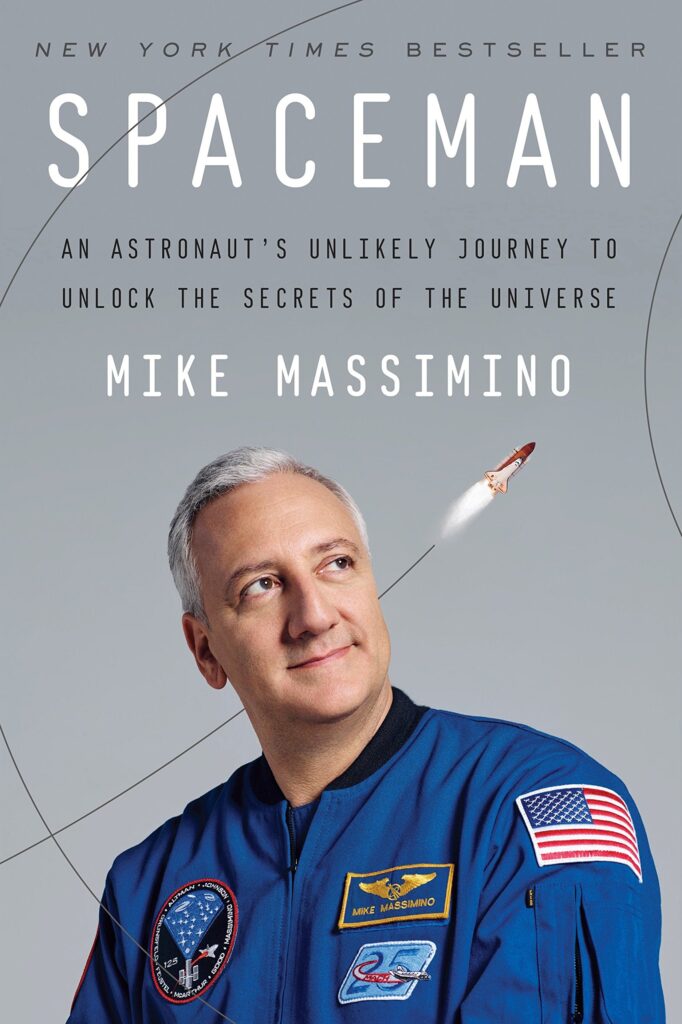Have you ever learned something and wondered, how did I get this far in my life without knowing that? I think we all do it. We have different “wow” moments based on different new nuggets of knowledge.
Until a recent episode of our podcast, Gracefully and Frankly, I had no idea how puppies were conceived. I thought I knew, but I was wrong. (Thank you, Erin, for the PG-rated tutorial via doggie Dottie!)
I also recently learned that bonsai isn’t a kind of tree. It’s the process one uses to artificially dwarf a tree into an ornamental tree. Virtually any tree can be subjected to it. Pine, elm, redwood, etc. Then it is called a bonsai.
A friend of mine was amazed to discover a beautiful walking trail near her home. She grew up in the area and didn’t know the trail existed. She wondered how that could happen!
Maybe you already know the particular things I didn’t know. I guarantee that there’s also something I know that you don’t. And so goes the circle of life!
The Spaceman Cometh
I recently read Spaceman, the 2016 autobiography of former astronaut Mike Massimino. I’d never heard of him until he appeared on the Big Bang Theory more than a decade ago. But in addition to learning about his unusual path to space, his book taught me about something I’d never given any thought: “human factors”.
Have you ever wondered why the accelerator in your car is on the right and the brake on the left? Or how airplane designers decided where all of the gauges, gizmos, and levers should go in a cockpit? Experts in human factors figured that stuff out. Human factors is an aspect of engineering. Mike is one of those engineers who determine how humans will interact with a design. It’s partly ergonomics but it’s more than that.
The Five Human Factors method is about studying the physical, cognitive, social, cultural and emotional factors that make up a complete customer experience.
Innovation Wiki
You could invent something useful but if it’s not easy to operate, it will flop. Someone along the way has to think about how a real human will approach your “thing” and whether they’ll be able to figure it out.
Exploiting Human Intuition
In a more sinister approach, the nerds at Facebook studied the human brain so that they could design their platform to appeal to its pleasure and addiction areas. When your Facebook post gets likes, your brain lights up. Their algorithms keep you coming back for more. After all, the only other human factors on Facebook involve clicking a mouse. This is also why a toddler can pick up a smartphone and know how to use it. Designers have studied the way little humans interact with things. It’s no wonder so many of us are addicted to technology.
Mike and his colleagues were more interested in making sure things were intuitive and accessible for the astronauts. When you’re facing 100 gauges, how does the human brain know where to go for the one you want? You can’t simply put a big red arrow beside each one. These are things that must be sorted out long before anyone considers counting down to a launch.

Massimino was an astronaut for 8 years. He flew on two shuttle missions, did spacewalks, worked on the Hubble telescope, and sent the first tweet from space. He prioritized family over longer stints in space and retired as an astronaut in 2014. His route to becoming a spaceman was unconventional. Most astronauts have been elite pilots. Mike became a pilot after NASA chose him for the space program. And his account of failing his first attempt at earning a PhD is excruciating but ultimately inspiring. Because he went back and nailed it the second time.
If you’ve ever wondered what it was like to become an astronaut, albeit not in the usual way, read this book. Sure, I’m a few years late, but what else is new? I’d love to spend more time learning about things I don’t know but, well, I don’t know what those things are!


It is amazing when you think about it all the things we learn from The Big Bang Theory. Recently my husband was watching a documentary about the Large Hadron Collider, of course I knew what it was from watching the show. Who would have thought that a sometimes so annoying TV show would have so much to teach us!
You’re so right, Pauline. Schrodinger’s Cat is another one that I never would have heard of otherwise. They taught us despite ourselves!! 😂
Thank you for an interesting blog today, Lisa.
I, too, did not know how puppies were conceived until Erin mentioned it on the podcast. Then I went to google to get a better understanding of the entire process. We live and learn, eh?
I do know with certainty that I could never be an astronaut. I would go bonkers in a small spaceship that was a gazillion miles from home. Also, how does one sip on a nice hot coffee with the absence of gravity?? Inquiring minds will now go to google to find out. 🙂
I’d never make it into the capsule! Thanks, Claire.
Toys have historically gone through kid testing to see how a given demographic reacts and plays with a given toy prior to its official launch. The Nielsen ratings measured viewer, viewing habits.
The wow factor is a daily occurrence if you’re blind and trying to navigate a sighted world, but its not what you think. My wow factor comes when I’m figuring something out, find the answer and wonder what sighted idiot designed the item. Web accessibility is a frequent frustration when a site goes from being accessible and then following an update the site becomes inaccessible and difficult to use. The VOILA site is a recent occurrence within the past week.
I can’t imagine how frustrating it is, Allan.
Good for him for not walking away when he didn’t get his doctorate the first time!
I am always inspired by the words of John Cougar Mellencamp: “I know a lot of things, but I don’t know a lot of other things.”